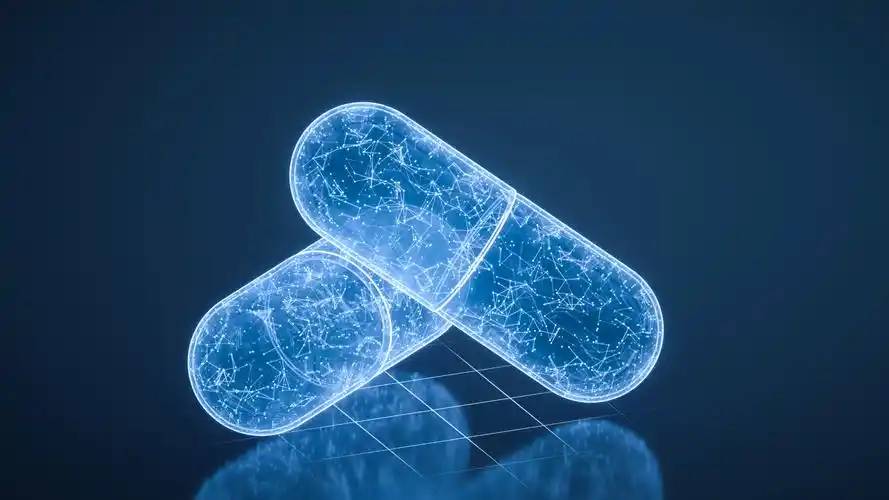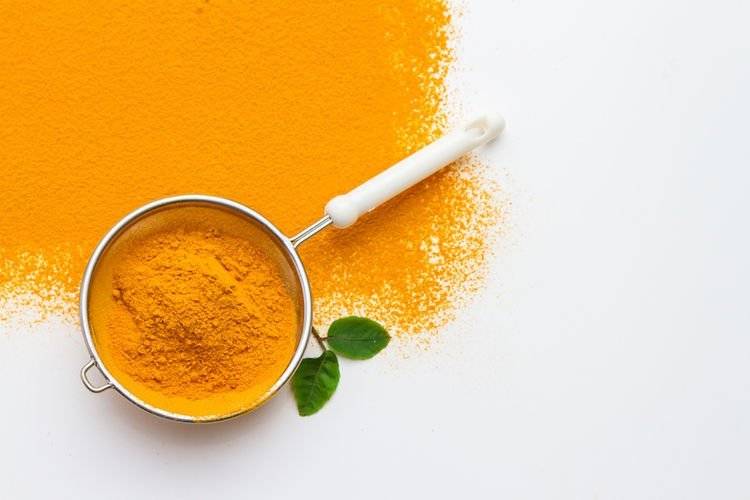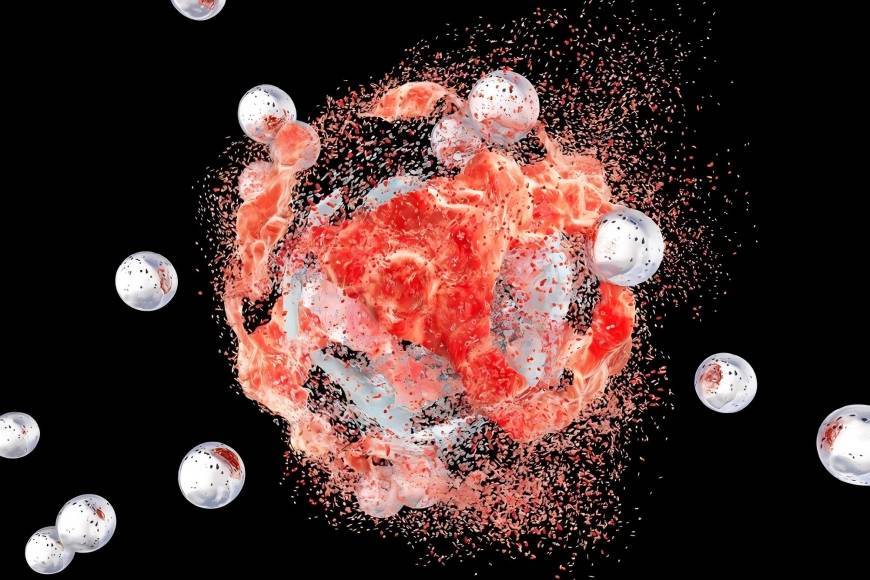Is Turmeric Curcumin Anti Inflammatory?
Curcumin (C21H20O6) is a fat-soluble polyphenolic compound extracted from the rhizome of turmeric. It is the main component of turmeric that exerts pharmacological effects. It has poor light and heat resistance and is extremely minimally toxic. Domestic and foreign scholars have found through research on curcumin that it has pharmacological effects such as anti-oxidative stress, anti-inflammatory, anti-fibrosis, and anti-tumor. Inflammation is the result of the interaction between inflammatory mediators and transcription factors.
Anti-inflammatory therapy has always been a focus of clinical research. Curcumin can exert its biological effect by inhibiting inflammatory mediators and transcription factors, and can synergistically enhance the effect of glucocorticoids to achieve effective anti-inflammatory effects [1]. Due to its powerful anti-inflammatory activity, curcumin is widely used to treat various inflammation-related diseases, such as diabetes and Alzheimer's disease (AD) [2]. In recent years, there has been widespread interest in the anti-inflammatory effects of curcumin. Many scholars have studied the anti-inflammatory effects of curcumin in disease treatment. This article summarizes the progress of research on the anti-inflammatory effects of curcumin in disease treatment at home and abroad.
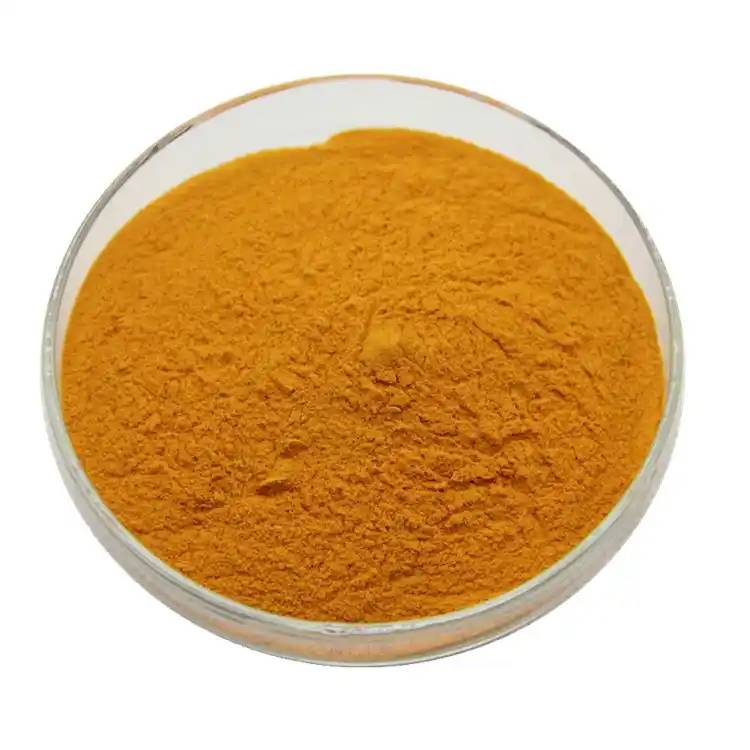
1. The anti-inflammatory effect of curcumin on diabetic nephropathy (DN)
DN is one of the complications of diabetes, and the incidence of the disease has been increasing in recent years. Its pathogenesis is complex and involves inflammation, oxidative stress, renal function damage, renal interstitial fibrosis, etc. [3]. Inflammatory cytokines play a key role in the development of DN and are one of the main pathogenesis mechanisms of DN [4-5]. Recent studies have shown that curcumin has an inhibitory effect on DN inflammation.
Some scholars have found that after curcumin treatment of high glucose level HK-2 cells, the expression of NLRP3 is reduced, and the activation of caspase-1 and IL-1β is significantly inhibited, suggesting that curcumin can inhibit the progression of DN by inhibiting the activation of NLRP3 inflammasomes [6-7]. Chen Jing et al. [8] constructed a DN rat model and detected the levels of related inflammatory factors after drug treatment. They found that curcumin can upregulate the expression of miaR-146a mRNA and target Traf6 to suppress the NF-κB-mediated pro-inflammatory factor TNF-α and IL-1β and other gene mRNA expression. Some scholars have found that the curcumin derivative C66 can reduce the production of TNF-α under high-sugar stimulation, inhibit the increase in the expression of IL-1β, TNF-α, IL-6, and IL-12 induced by high-sugar, and inhibit the activation of the JNK/NF-κB signaling pathway, thereby preventing the progression of DN [9].
Zhao Shiyue [10] found on this basis that curcumin derivative C66 downregulates the expression of proinflammatory factors ICAM-1, VCAM-1, and MCP-1, thereby exerting its protective effect on the kidneys. Literature [11] found that curcumin can inhibit the action of inflammatory factors by reversing the Tyr (14) phosphorylation of caveolin-1 activated by TLR4, thereby improving DN. Hongjin et al. [12] found that the anti-inflammatory effect of the curcumin analogue J17 was related to the inhibition of the P38 and AKT signal pathways. Altamimi et al. [13] showed that curcumin can inhibit caspase-3 activation, reduce transforming growth factor β-1 (TGF-β1) mRNA and protein levels, and reduce the level of inflammatory cytokines, which has an anti-inflammatory therapeutic effect on DN. However, its specific anti-inflammatory mechanism has yet to be studied.
2. The anti-inflammatory effect of curcumin on AD
AD is a progressive neurodegenerative disease. Curcumin has antioxidant and anti-inflammatory effects in the nervous system, and plays a role in the treatment and prevention of AD. Fadus et al. [14] showed that curcumin can inhibit the activation of BV2 cells and GFAP by inhibiting the nuclear factor (NF)-κB signaling pathway, reduce the production of cytokines, and thus improve glial cell-mediated inflammation. Deng Yushuang [15] established a cellular model of AD and found that curcumin upregulates NEP through the DNA methylation pathway, thereby inhibiting the activity of the NEP-mediated AKT/NF-κB signaling pathway and downregulating the protein levels of inflammatory-related genes iNOS and COX-2 downstream of the pathway, thereby reducing the inflammatory response in AD. Li Fan [16] confirmed that curcumin can reduce the content of TNF-α, IL-6 and NO by inhibiting the expression of the TLR4/NF-κB signaling pathway.
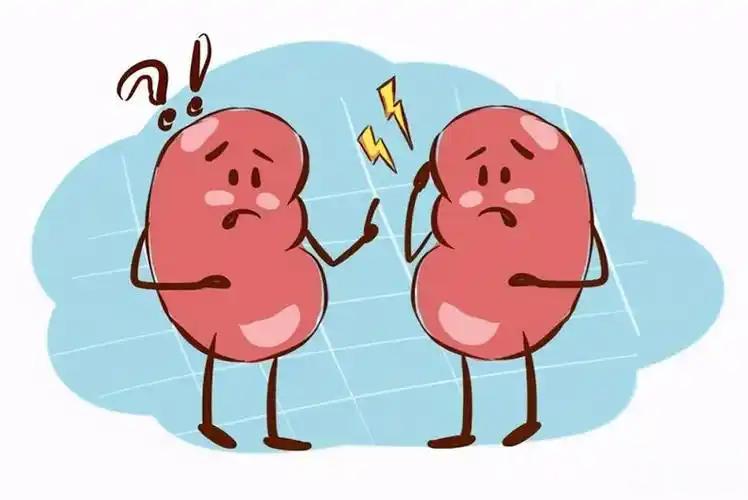
3 Anti-inflammatory effect of curcumin on rheumatoid arthritis (RA)
RA is a chronic autoimmune disease. Dai et al. [17] showed that curcumin inhibited the mTOR pathway, thereby inhibiting the production of TNF-α in the serum and synovial fluid of RA rats. In addition, studies have shown that curcumin can reduce the levels of IL-6 and IL-7 in RA rats, but the specific mechanism is still unclear and needs to be studied [18-19]. Tianyi et al. [20] found that curcumin can inhibit IL-1β-induced chondrocyte apoptosis by activating autophagy and inhibiting the NF-κB signaling pathway, thereby exerting anti-inflammatory and protect against rheumatoid arthritis. Wang et al. [21] found that curcumin can reduce joint swelling in rats in vivo, and that curcumin can inhibit the degradation of IκB-α and reduce the production of COX-2 in LPS-induced inflammatory RAW264.7 cells in vitro.
4 Anti-inflammatory effect of curcumin on non-alcoholic fatty liver disease
Non-alcoholic fatty liver disease (NAFLD) is a kind of acquired metabolic stress-induced liver damage. There are various types, and the clinical manifestations are also different. Curcumin may have a protective effect on NAFLD through its anti-inflammatory effect. Afrin et al. [22] found that curcumin significantly reduced the expression of pro-inflammatory factors such as interferon-gamma (IFN-γ) and IL-1β-induced protein, as well as oxidative stress and the transcriptional expression of TLR4 and NF-κB in a mouse model of NASH. This indicates that curcumin can block the progression of NASH by inhibiting HMGB1-NF-κB transcription. Wu Pengbo et al. [23] established a NAFLD cell model and treated it with curcumin. By testing the relevant indicators, it was found that after curcumin intervention, the levels of TNF-α and IL-6 in the supernatant of HepG2 cells were significantly reduced, and the expression of NF-κB and Caspase-3/9 proteins was also reduced. This suggests that curcumin may protect against NAFLD through its anti-inflammatory effects. Mahmouda et al. [24] found that TNF-α plays a key role in the pathogenesis of NAFLD by stimulating nuclear factor κB (NF-κB). After curcumin was applied, TNF-α and CRP, a serum inflammatory marker, were significantly reduced.
5 Anti-inflammatory effect of curcumin on atherosclerosis (AS)
AS is a slowly progressive disease. Studies have shown that it is characterized by chronic inflammation of the arteries [25]. Fan Aiyue et al. [26] established an AS rabbit model, causing AS inflammation in the rabbits. They then tested the relevant inflammatory factors and found that a large number of inflammatory factors had been released, with hs-CRP, IL-6, TNF-α, etc., all significantly elevated. In contrast, the curcumin treatment group showed significantly lower levels of these indicators, indicating that curcumin has a significant anti-inflammatory effect.
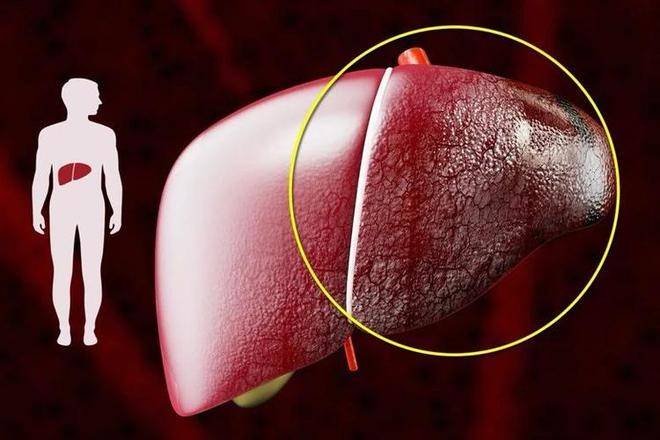
Pan Hailong [27] used a rat AS model to detect the expression of the PI3K/AKt signaling pathway protein, which is related to atherosclerosis inflammation and lipid metabolism. The results showed that curcumin can significantly reduce the expression of the PI3K/AKt gene and its protein, and may regulate the apoptosis of inflammatory factors through this pathway, significantly reducing serum TC, TG, LDL levels and inhibit the production of inflammatory factors IL-6 and TNF-α in rat models of aortic inflammation, reduce the accumulation of lipid components and reduce aortic inflammatory infiltration. Ouyang et al. [28] found that curcumin can inhibit HIF-1α-induced macrophage apoptosis and inflammation through the ERK signaling pathway, and reduce the expression of IL-6 and TNF-α.
6 Anti-inflammatory effect of curcumin on colitis
Colitis refers to inflammatory lesions of the colon caused by various reasons. Inflammatory damage can be caused when the balance between pro-inflammatory and anti-inflammatory factors is disrupted. The anti-inflammatory effect of curcumin can be used to treat the inflammatory damage of colitis. Some scholars have found that regulating the balance between pro-inflammatory and anti-inflammatory factors can relieve mucosal damage [29-30]. Wang Yao et al. [31] reproduced an experimental mouse model of ulcerative colitis and treated it with curcumin.
After treatment, the expression of GM-CSF, IL-2, IL-12P40, and IL-21 in the colon tissue was significantly reduced, while the expression levels of IL-4 and IL-15 were significantly increased. This indicates that curcumin can maintain the balance between pro-inflammatory and anti-inflammatory factors by regulating these factors, thereby achieving the purpose of treating colitis. Wang Danni [32] found that curcumin can inhibit the expression of Notch1 and DLL1 proteins in the Notch signaling pathway, thereby inhibiting the expression of IL-17 and TNF-α proteins and reducing the inflammatory response of the colonic mucosa. Liu Chunbao et al. [33] found that curcumin can reduce the inflammatory response in a rabbit model of colitis. The mechanism may be through inhibiting the expression of VCAM-1 and reducing the recruitment of immune cells to exert an anti-inflammatory effect. However, the specific mechanism is not yet clear and needs to be further explored.
7 Conclusion and outlook
Turmeric extract, as a traditional Chinese herbal medicine, has a long history of research and is gradually becoming a research hotspot. It has better development prospects in clinical practice. In recent years, many scholars at home and abroad have been studying the clinical application of curcumin in anti-inflammation. Inflammatory diseases are manifested in various aspects of the body, and can be classified according to disease type into cardiovascular diseases, brain diseases, respiratory diseases, digestive tract diseases, and hormone-related diseases. Although research into the therapeutic effects of curcumin in inflammatory diseases is progressing, its anti-inflammatory effects inhibit the activity of inflammatory factors and the expression of pro-inflammatory factors in the development of these diseases. However, most current research focuses on the inhibition of various signal pathways by curcumin, which improves protein expression, reduces inflammatory responses, and in turn reduces inflammatory factors such as TNF-α and IL-1β. Research into other ways in which curcumin exerts its anti-inflammatory effects still needs to be improved. At the same time, the research on curcumin in inflammatory diseases is limited, and there is an urgent need to accelerate the pace of research.
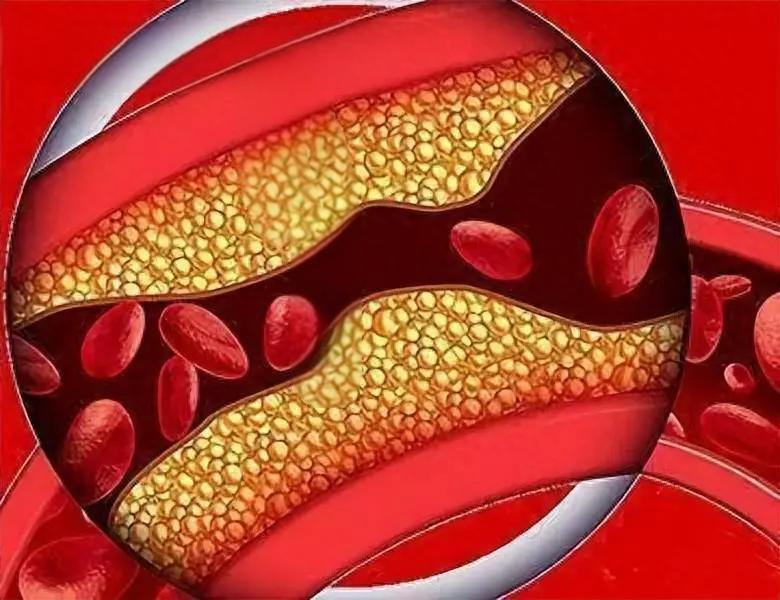
For future research on the anti-inflammatory effects of curcumin, it can be started from the following aspects: (1) The activation of inflammatory bodies plays a key role in the development of inflammatory diseases. At present, it has only been found that curcumin can inhibit the activation of NLRP3 inflammatory bodies, thereby regulating the level of inflammatory factors and playing an anti-inflammatory therapeutic role, which is not comprehensive enough.
In the future, research can be carried out on the activation and regulatory effects of curcumin on NLRC4 inflammasomes and AIM2 inflammasomes. (2) Type 2 innate lymphoid cells (ILC2) are a newly discovered population of innate lymphoid cells. Some studies have shown that ILC2 plays a role in the development of inflammatory diseases. In the future, it can be attempted to study whether curcumin can exert its anti-inflammatory effect by acting on ILC2. (3) Recent studies have found that chemokine ligand 21 (CCL21) is involved in the pathogenesis of many chronic inflammatory diseases. In the future, it can be studied whether curcumin can reduce the body's inflammatory response by inhibiting the expression of CCL21. It is believed that with further research by researchers on the anti-inflammatory effects of curcumin in disease treatment and the development of effective derivatives, the application of curcumin's anti-inflammatory effects in disease will be more widely recognized. At the same time, it provides more possibilities for the clinical application of curcumin in anti-inflammation.
References
[1] Shi Ying, Li Shuping. Research progress on the clinical efficacy of curcumin [J]. Journal of Liaoning University of Traditional Chinese Medicine, 2019, 21(6): 175-178.
[2] Shatadal G,Sharmistha B,Parames C S.The beneficial role of curcumin on inflammation,diabetes and neurodegenerative disease:A recent update[J].Food Chem Toxicol,2015,83:111- 124.
[3] Li Zhi-Jun, Wang Li, Wang Hao. Mechanism of curcumin in improving diabetic nephropathy. Medical Information, 2018, 31(24): 35-38.
[4] Matoba K,Takeda Y,Nagai Y,et al.Unraveling the Role of Inflammation in the Pathogenesis of Diabetic Kidney Disease[J].Int J Mol Sci,2019,20(14):3393.
[5] Junling G,Wei H,Wenqian Z,et al.Sodium butyrate alleviates high-glucose-induced renal glomerular endothelial cells damage via inhibiting pyroptosis[J].Int Immunopharmacol,2019,75: 105832.
[6] Lu Miaomiao, Zhang Huiguang, Dong Moyan, et al. Effects and mechanisms of curcumin on the activation of NLRP3 inflammasome in diabetic nephropathy [J]. Advances in Anatomical Sciences, 2018, 24(4): 393-396, 400.
[7] Miaomiao L,Nanchang Y,Wei L,et al.Curcumin Ameliorates Diabetic Nephropathy by Suppressing NLRP3 Inflammasome Signaling[J].Biomed Res Int,2017,2017:1516985.
[8] Chen Jing, Wang Qian, Wang Kai, et al. Research on the mechanism of curcumin protecting diabetic nephropathy in rats by inhibiting the NF-κB signaling pathway through miR-146a [J]. Hebei Medical University Journal, 2021, 42(2): 134-139.
[9] Yong P,Yi W,Lu C,et al.Inhibition of high glucose-induced inflammatory response and macrophage infiltration by a novel curcumin derivative prevents renal injury in diabetic rats[J].Br J Pharmacol,2012,166(3):1169-1182.
[10] Zhao Shiyue. The role of autophagy regulated by the JNK signaling pathway in the prevention of diabetic nephropathy by the curcumin derivative C66 [D]. Changchun: Jilin University, 2018.
[11] Li-Na S,Zhi-Ying Y,Sha-Sha L,et al.Curcumin prevents diabetic nephropathy against inflammatory response via reversing caveolin-1 Tyr14 phosphorylation influenced TLR4 activation[J]. Int Immunopharmacol,2014,23(1):236-246.
[12] Hongjin C,Xi Y,Kongqin L,et al.Inhibition of high glucose- induced inflammation and fibrosis by a novel curcumin derivative prevents renal and heart injury in diabetic mice[J].Toxicol Lett, 2017,278:48-58.
[13] Altamimi J Z,Alfaris N A,Al-Farga A M,et al.Curcumin reverses diabetic nephropathy in streptozotocin-induced diabetes in rats by inhibition of PKCβ/p66Shc axis and activation of FOXO-3a[J].The Journal of Nutritional Biochemistry,2021, 87:108515.
[14] Fadus M C,Lau C,Bikhchandani J,et al.Curcumin:An age-old anti-inflammatory and anti-neoplastic agent[J].J Tradit Complement Med,2017,7(3):339-346.
[15] Deng Y S. Study on the mechanism of curcumin regulating NEP expression through DNA methylation to reduce inflammation in Alzheimer's disease cell models [D]. Chongqing: Chongqing Medical University, 2015.
[16] Li Fan. Curcumin alleviates damage to neurons in the brain of horizontal mice with Alzheimer's disease by inhibiting the TLR4/NF-kB signaling pathway [J]. Anatomical Research, 2017, 39(2): 102-105.
[17] Dai Q,Zhou D,Xu L,et al.Curcumin alleviates rheumatoid arthritis-induced inflammation and synovial hyperplasia by targeting mTOR pathway in rats[J].Drug Des Devel Ther,2018, 12:4095-4105.
[18] Claudia L,Sara L,Matteo B,et al.Curcumin Anti-Apoptotic Action in a Model of Intestinal Epithelial Inflammatory Damage[J]. Nutrients,2017,9(6):578.
[19] Manca M L,Lattuada D,Valenti D,et al.Potential therapeutic effect of curcumin loaded hyalurosomes against inflammatory and oxidative processes involved in the pathogenesis of rheumatoid arthritis:The use of fibroblast-like synovial cells cultured in synovial fluid[J].European Journal of Pharmaceutics and Biopharmaceutics,2019,136:84-92.
[20] Tianyi C,Renpeng Z,Yong C,et al.Curcumin ameliorates IL- 1β-induced apoptosis by activating autophagy and inhibiting the NF ‐ κB signaling pathway in rat primary articular chondrocytes[J].Cell Biol Int,2021,45(5):976-988.
[21] Wang Q,Ye C,Sun S,et al.Curcumin attenuates collagen- induced rat arthritis via anti-inflammatory and apoptotic effects[J].Int Immunopharmacol,2019,72:292-300.
[22] Afrin R,Arumugam S,Rahman A,et al.Curcumin ameliorates liver damage and progression of NASH in NASH-HCC mouse model possibly by modulating HMGB1-NF- κB translocation[J]. Int Immunopharmacol,2017,44:174-182.
[23] Wu Pengbo, Song Qi, Yu Yuanjie, et al. Protective effect and mechanism of curcumin on non-alcoholic fatty liver cell model [J]. Journal of Practical Hepatology, 2020, 23(3): 324-327.
[24] Mahmouda A M,El-Hagag N,El-Bitar H,et al.Potential protective effect of curcumin in high-fat diet-induced nonalcoholic fatty liver disease in rats[J].Journal of Current Medical Research and Practice,2021,6(1):92-98.
[25] Haftcheshmeh S M,Karimzadeh M R,Azhdari S,et al. Modulatory effects of curcumin on the atherogenic activities of inflammatory monocytes:Evidence from in vitro and animal models of human atherosclerosis[J].BioFactors,2020,46(3): 341-355.
[26] Fan Aiyue, Wu Xiangjun, Shao Aimin, et al. Effects of curcumin on blood lipids, inflammatory factors and endothelial function in atherosclerotic rabbits [J]. Chinese Journal of Traditional Chinese Medicine Science and Technology, 2020, 27(3): 373-375.
[27] Pan Hailong. Effect of curcumin on the mRNA and protein expression of PI3K/AKt signaling pathway in atherosclerotic rats [D]. Qingdao: Qingdao University, 2020.
[28] Ouyang S,Yao Y H,Zhang Z M,et al.Curcumin inhibits hypoxia inducible factor-1α -induced inflammation and apoptosis in macrophages through an ERK dependent pathway[J]. Eur Rev Med Pharmacol Sci,2019,23(4):1816-1825.
[29] Palash B,Isadore B,Medha S,et al.Dual Role of GM-CSF as a Pro-Inflammatory and a Regulatory Cytokine:Implications for Immune Therapy[J].J Interferon Cytokine Res,2015,35(8): 585-599.
[30] Jiang N,Tang J,Yunsheng X U,et al.Progress in anti-tumor immunotherapy of GM-CSF[J].Immunological Journal,2015, 31(8):717-722.
[31] Wang Y, Fu X, Zhang C, et al. Curcumin regulates the expression of related cytokines in colon tissue of mice with colitis [J]. Journal of Tianjin University of Traditional Chinese Medicine, 2020, 39(6): 686-689.
[32] Wang, Danni. Research on the protective effect and mechanism of curcumin and demethoxycurcumin on the intestinal mucosa of ulcerative colitis [D]. Changchun: Jilin University, 2020.
[33] Liu Chunbao, Zhou Jun, Xia Liang, et al. Effect of curcumin on inflammatory response and VACM-1 expression in an animal model of colitis [J]. Journal of Huazhong University of Science and Technology (Medical Sciences), 2020, 49(3): 281-285.


 English
English French
French Spanish
Spanish Russian
Russian Korean
Korean Japanese
Japanese